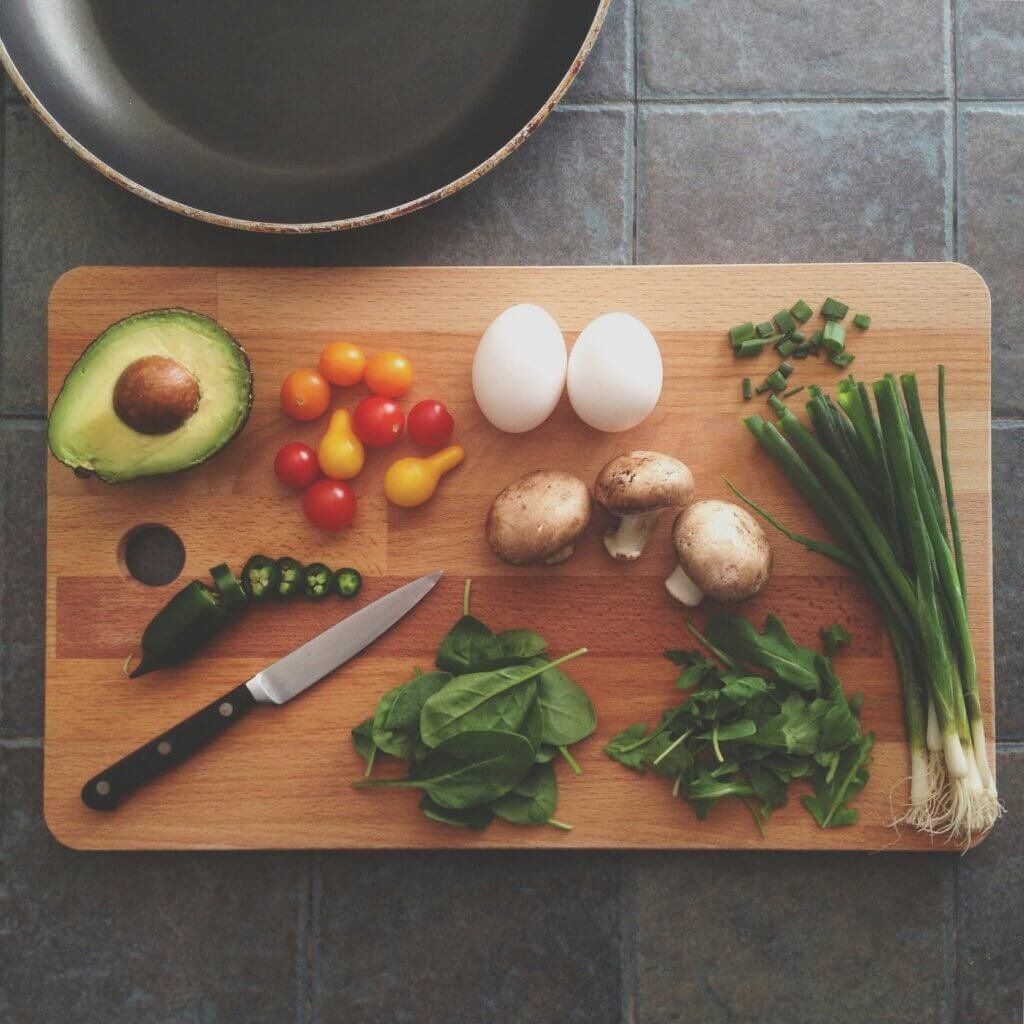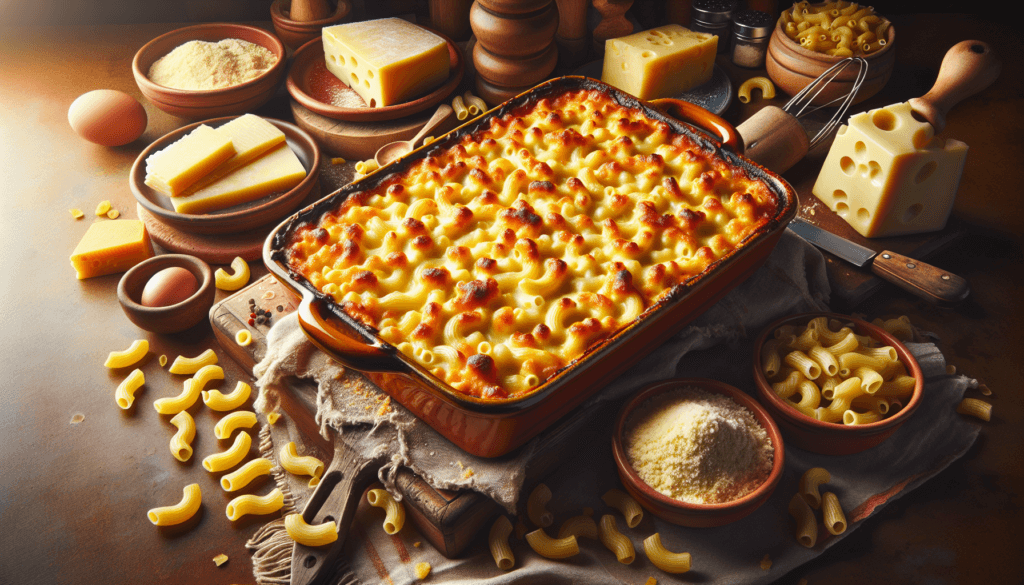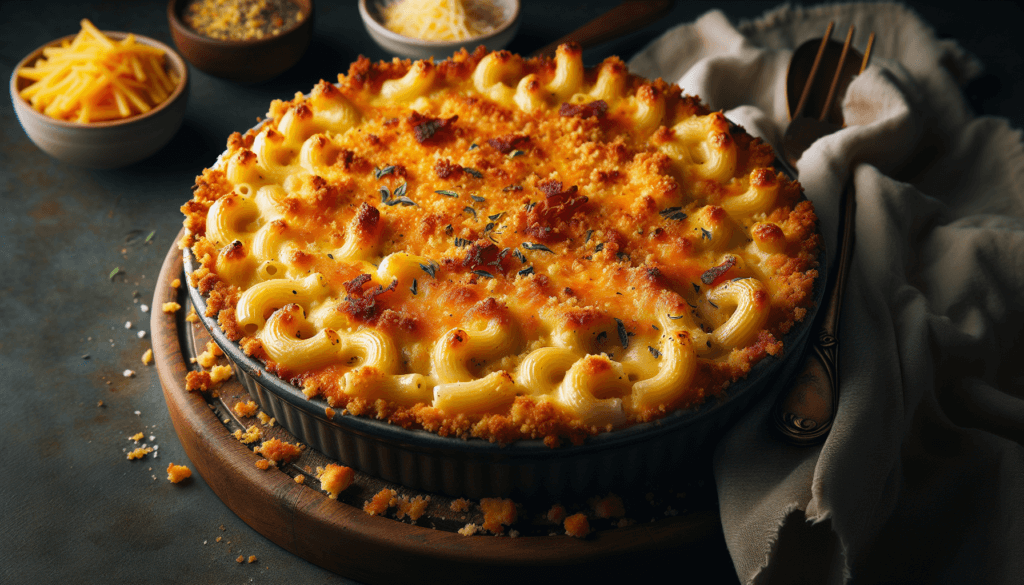If you’re craving a comforting and indulgent dish, look no further than classic baked mac and cheese. This timeless favorite is a crowd-pleaser that never disappoints. Whether you prefer a gooey and cheesy version or a crispy and golden one, there are endless ways to make this beloved dish. In this article, we’ll explore some of the top ways to create the perfect baked mac and cheese that will have everyone asking for seconds. From selecting the best cheese combinations to adding unique toppings, get ready to elevate your mac and cheese game to a whole new level. Get ready to dig into a dish that combines creamy, cheesy goodness with a satisfying crunch in every bite.
Preparation and Cooking Time
Estimating the time required
When making classic baked mac and cheese, it’s important to factor in the preparation and cooking time to ensure a delicious and timely meal. On average, the total time required for baked mac and cheese is approximately 1 hour and 30 minutes. This includes the time needed to prepare the cheese sauce, cook the pasta, and bake the dish to golden perfection. It’s always a good idea to set aside some extra time for any variations or modifications you may choose to incorporate.
Factors affecting cooking time
While the estimated time mentioned above serves as a general guideline, it’s essential to be aware of the factors that can affect the cooking time of your mac and cheese. The type of pasta used, the thickness of the baking dish, and the oven temperature can all influence how long it takes for your dish to cook through. Thinner pasta, such as macaroni, tends to cook faster than larger pasta shapes, so adjustments to cooking time may be necessary. Additionally, using a shallow baking dish can result in a faster cooking time compared to a deeper dish.
Choosing the Right Pasta
Macaroni as the traditional choice
When it comes to classic baked mac and cheese, macaroni stands out as the traditional pasta of choice. Its small, tubular shape allows the cheese sauce to cling to the pasta, creating a creamy and indulgent dish. Macaroni cooks quickly and evenly, making it an ideal option for baked mac and cheese.
Exploring other pasta options
While macaroni is the go-to choice, it’s always fun to explore different pasta options to give your mac and cheese a unique twist. Shells, elbows, rotini, or fusilli can all be excellent alternatives, providing different textures and shapes that catch and hold the cheese sauce. Experimenting with different pasta can add an exciting element to your mac and cheese experience.

Considerations for the best texture
To achieve the best texture in your mac and cheese, it’s important to cook the pasta al dente. This means that the pasta should still have some firmness when bitten into, as it will continue to cook while baking in the cheese sauce. Overcooking the pasta can result in a mushy texture, so be sure to follow the instructions on the pasta packaging and taste-test for readiness before draining.
Selecting Cheeses for the Perfect Blend
Combining multiple types of cheese
The beauty of mac and cheese lies in the variety of cheeses that can be used to create a rich and flavorful dish. A combination of different cheeses can enhance the taste and texture of your mac and cheese. Traditional choices include sharp cheddar, Gruyere, or Parmesan, but don’t be afraid to get creative! Experimenting with different combinations of cheeses adds depth and complexity to your dish.
Cheeses with meltability
To achieve a smooth and creamy cheese sauce, it’s important to select cheeses with excellent meltability. Cheeses that melt well include mozzarella, Monterey Jack, fontina, and Gouda. These cheeses blend effortlessly and contribute to the gooey, cheesy goodness that we all love in mac and cheese.
Balancing flavors with sharp or mild cheeses
When selecting cheeses for your mac and cheese, consider the flavor profiles you want to achieve. Sharp cheeses such as aged cheddar or blue cheese can add a bold and tangy taste, while milder cheeses like Swiss or Havarti can offer a creamy and subtle flavor. Experimenting with different combinations of sharp and mild cheeses can help you find the perfect balance to suit your taste buds.

Exploring unique cheese options
For those looking to add a twist to their mac and cheese, exploring unique cheese options can take your dish to a whole new level. Try incorporating smoked Gouda for a smoky flavor, pepper jack for a spicy kick, or even brie for a velvety and luxurious finish. The possibilities are endless, so don’t be afraid to step outside of the traditional cheese choices and experiment with new and exciting flavors.
Preparing the Cheese Sauce
Classic roux-based cheese sauce
A classic way to prepare the cheese sauce for mac and cheese is by using a roux as the base. A roux is made by combining equal parts of flour and butter and cooking it over low heat until it forms a paste-like consistency. To create the cheese sauce, milk is then added to the roux, followed by the selected cheeses. This method results in a velvety and smooth sauce that coats the pasta evenly.
Alternative sauce options
While the classic roux-based sauce is a favorite, there are alternative options to consider when preparing your mac and cheese. For a lighter and quicker alternative, you can use a combination of evaporated milk and shredded cheese, eliminating the need for a roux. Another option is to make a cream cheese-based sauce, which lends a rich and creamy texture to the dish. Exploring these alternatives allows for flexibility and customization based on your preferences.
Tips for a smooth and creamy sauce
To achieve a smooth and creamy cheese sauce, there are a few tips to keep in mind. It’s important to gradually whisk in the cheese after the milk has been added to prevent clumping. Additionally, using freshly grated cheese instead of pre-packaged shredded cheese can make a noticeable difference in the texture of the sauce. Finally, ensuring that the sauce is heated gently and stirred continuously helps prevent the cheese from burning or sticking to the pan, resulting in a luscious and silky-smooth sauce.
Enhancing the Flavor

Adding spices and herbs
To elevate the flavor profile of your mac and cheese, adding spices and herbs can make a significant difference. Common additions include garlic powder, onion powder, paprika, or dried mustard, which add depth and complexity to the dish. Herbs like thyme, parsley, or chives can also contribute freshness and additional layers of flavor. Experimenting with different combinations of spices and herbs allows you to tailor the taste of your mac and cheese to your liking.
Experimenting with different seasonings
In addition to spices and herbs, experimenting with different seasonings can further enhance the flavor of your mac and cheese. Consider adding a touch of Worcestershire sauce for tanginess, hot sauce for a spicy kick, or even a hint of nutmeg for a subtle warmth. These seasonings can help elevate your mac and cheese to new heights and impress your taste buds.
Incorporating additional ingredients
Adding additional ingredients to your mac and cheese can add texture and depth to the dish. Consider incorporating diced onions, sautéed mushrooms, or crispy bacon to provide contrasting flavors and textures. For a healthier option, adding steamed broccoli, roasted butternut squash, or even spinach can introduce a pop of color and nutrients to your mac and cheese. Being creative with the ingredients you add can transform a classic dish into something uniquely delicious.
Creating a Crispy Topping
Traditional breadcrumb topping
A crispy topping is the cherry on top when it comes to baked mac and cheese. The most traditional and widely loved option is a breadcrumb topping. To make a classic breadcrumb topping, combine breadcrumbs, melted butter, and grated Parmesan cheese. Sprinkle this mixture over the mac and cheese before baking, and it will create a golden and crunchy crust that adds texture to each bite.

Using crushed crackers or chips
For those looking for an alternative to breadcrumbs, crushed crackers or chips can be an excellent choice for a crispy topping. Saltine crackers, buttery Ritz crackers, or even crushed potato chips can provide a unique flavor and texture to your mac and cheese. Simply crush the crackers or chips and sprinkle them over the dish, ensuring an even distribution before baking.
Other creative topping ideas
If you’re feeling adventurous, there are plenty of other creative topping ideas to explore. Consider adding shredded cheese, such as mozzarella or cheddar, on top of the mac and cheese for an extra gooey and cheesy crust. For a touch of elegance, sprinkle some Parmesan cheese mixed with chopped fresh herbs, like rosemary or thyme. The options are endless, so feel free to experiment and discover your favorite combination.
Baking Techniques and Temperature
Optimal baking dish
Choosing the right baking dish for your mac and cheese can make a difference in how it bakes. A shallow baking dish provides more surface area, helping the mac and cheese cook faster and develop a crispier topping. If you prefer a creamier texture, a deeper dish will result in a thicker layer of sauce. Consider your personal preferences and adjust the baking dish accordingly to achieve the desired result.
Ensuring even heat distribution
To ensure even heat distribution while baking mac and cheese, it’s essential to preheat your oven and position the baking dish in the center. This allows the mac and cheese to bake evenly, preventing any parts from becoming overcooked or undercooked. If you notice that one side is browning faster than the other, rotating the dish halfway through the baking process can help achieve a consistent and golden crust.

Adjusting baking time and temperature
The recommended baking time and temperature for mac and cheese is typically 350°F (175°C) for approximately 30-40 minutes. However, this can vary depending on the density of the dish and the desired level of doneness. If you prefer a slightly firmer texture, consider extending the baking time by 5-10 minutes. On the other hand, if a creamier and more gooey result is what you’re after, reducing the baking time by a few minutes might be the way to go. Adjusting the baking time and temperature allows you to customize your mac and cheese to your liking.
Baking with or without cover
Whether to bake your mac and cheese with or without a cover is a personal preference. Baking the dish uncovered allows the top to become golden and crispy, while baking with a cover retains more moisture and results in a creamier texture. If you enjoy a combination of both, you can opt to cover the dish for the first half of the baking time and then remove the cover for the remaining time to achieve the best of both worlds. Experimenting with different baking methods can help you find the perfect balance of texture and flavor.
Making Mac and Cheese Healthier
Reducing fat content
While mac and cheese is typically known for its rich and indulgent nature, there are ways to make it healthier without compromising on flavor. One option is to use low-fat or reduced-fat cheeses in the cheese sauce. Another approach is to replace some of the butter in the roux with a healthier alternative, such as olive oil or Greek yogurt. These adjustments can significantly reduce the fat content of the dish while still maintaining a creamy and satisfying mac and cheese experience.
Using whole-grain pasta
To add a nutritional boost to your mac and cheese, consider using whole-grain pasta instead of the traditional refined white pasta. Whole-grain pasta contains more fiber and nutrients, making it a healthier option. It provides a nuttier flavor and a slightly chewier texture, adding an extra dimension to your mac and cheese while promoting a balanced diet.
Incorporating vegetables
Incorporating vegetables into your mac and cheese not only adds nutritional value but also enhances the flavor and texture of the dish. Adding steamed broccoli, roasted cauliflower, or sautéed mushrooms can contribute a delightful crunch and bring a vibrant pop of color to the meal. By increasing the vegetable content, you can create a mac and cheese that is both delicious and nutritious.
Exploring dairy-free alternatives
For those who are lactose intolerant or follow a dairy-free lifestyle, there are plenty of alternatives to traditional dairy products. Using dairy-free cheeses, such as those made from almonds or cashews, can provide a similar creamy texture and cheesy flavor. Coconut milk or almond milk can be substituted for regular milk, adding a subtle sweetness and richness to the cheese sauce. Exploring dairy-free alternatives allows everyone to enjoy the classic comfort of mac and cheese, regardless of dietary restrictions.
Serving and Garnishing
Recommended portion sizes
When serving mac and cheese, it’s important to consider portion sizes to ensure a satisfying and well-balanced meal. As a general guideline, a portion size of mac and cheese is around 1 cup. However, keep in mind that this can vary depending on individual preferences and dietary needs. If serving as a main course, consider pairing the mac and cheese with a side salad or steamed vegetables to create a well-rounded and nutritious meal.
Pairing with complementary dishes
While mac and cheese is excellent on its own, pairing it with complementary dishes can take your meal to the next level. Grilled or roasted chicken, sautéed shrimp, or even pulled pork can add a protein component and create a more substantial and satisfying meal. Steamed or roasted vegetables, such as broccoli, asparagus, or Brussels sprouts, can provide a refreshing contrast and round out the flavors on the plate. Whether it’s a simple side dish or a full-fledged feast, there are endless possibilities for complementing mac and cheese.
Popular mac and cheese garnishes
Garnishing your mac and cheese can add the perfect finishing touch, both aesthetically and flavor-wise. Some popular garnishes include freshly chopped parsley, crispy bacon bits, or a sprinkle of paprika for a pop of color. For those who enjoy a bit of heat, a drizzle of hot sauce or a sprinkling of red pepper flakes can give your mac and cheese an exciting kick. Get creative and let your personal preferences guide you when choosing the ideal garnish for your dish.
Creative Mac and Cheese Variations
Adding protein with meat or seafood
To turn your mac and cheese into a heartier meal, consider adding protein-rich ingredients such as meat or seafood. Cooked and diced chicken, ground beef, or crumbled sausage can all be excellent choices to incorporate into your mac and cheese. For seafood lovers, shrimp, crab meat, or flaked salmon can elevate the dish and create a more indulgent dining experience. Adding protein not only adds flavor but also increases the nutritional value of your mac and cheese.
Mac and cheese with bacon
Bacon lovers rejoice! Adding crispy, crumbled bacon to your mac and cheese can take it to new heights of deliciousness. The smoky, savory flavor of bacon pairs beautifully with the creamy cheese sauce, creating a symphony of flavors that will have everyone coming back for seconds. Simply cook the bacon until crispy, crumble it into small pieces, and sprinkle it over the baked mac and cheese for an irresistible twist.
Spicy mac and cheese
For those who enjoy a little heat, spicing up your mac and cheese can add an extra kick. Incorporating jalapenos, crushed red pepper flakes, or even a dash of hot sauce can give your dish a fiery twist. The heat from the spices pairs wonderfully with the richness of the cheese sauce, creating a flavor combination that will tantalize your taste buds. Adjust the level of spice to your preference, and prepare for a memorable and fiery mac and cheese experience.
Mac and cheese with various vegetables
Adding different vegetables to your mac and cheese can transform it into a colorful and nutrient-packed dish. By incorporating ingredients such as roasted butternut squash, sautéed spinach, or caramelized onions, you can introduce new flavors and textures while keeping the dish balanced and wholesome. The possibilities are endless, so feel free to get creative and let your favorite vegetables shine in your mac and cheese creation.
Exploring international flavors
Adding international flavors to your mac and cheese can open up a world of taste sensations. Consider incorporating spices and ingredients from different cuisines to create a fusion mac and cheese dish. For example, adding curry powder and coconut milk can give your mac and cheese an Indian-inspired twist. Embracing Mexican flavors by adding cumin, chili powder, and salsa can result in a zesty and delicious dish. Don’t be afraid to experiment and explore different cultural influences to create a mac and cheese experience that is uniquely your own.
In conclusion, classic baked mac and cheese is a comfort food favorite that can be customized and elevated to suit any palate. By carefully selecting the right pasta, cheeses, sauce, seasonings, and toppings, you can create a mac and cheese masterpiece that is both satisfying and delicious. Whether you choose to stick with the traditional recipe or venture into new and exciting variations, mac and cheese remains a timeless and beloved dish that brings warmth and joy to every table. So gather your ingredients, get creative, and enjoy the process of making the perfect mac and cheese that suits your taste and preferences.


